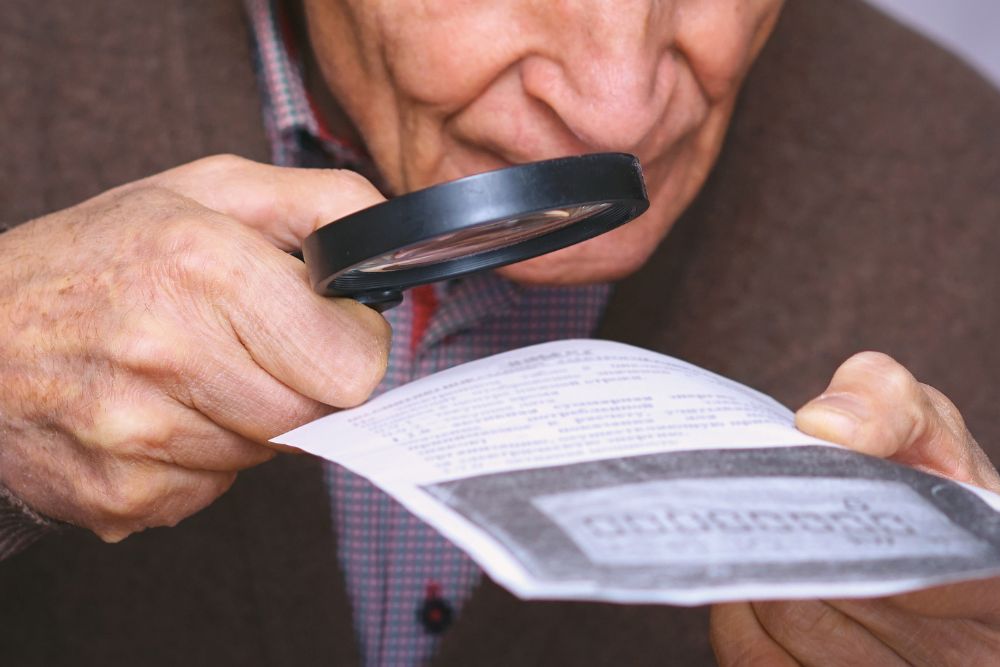Low Vision Awareness: Tools and Strategies for Living With Low Vision

February is Low Vision Awareness Month. Low vision and blindness are the nation’s leading causes of disability. Survey studies show that 27.8% of US adults 71 years and older have a visual impairment. About 4 million people live with low vision; within the next 30 years, the incidence of low vision will increase to more than 9.5 million. Low vision is one type of visual impairment that glasses, contact lenses, medical treatment, or surgery cannot correct. The condition often makes everyday activities difficult. Although low vision is permanent, some strategies (e.g., using assistive devices, employing special techniques, and seeing a low-vision specialist) can help you more efficiently manage daily tasks.
What Is Low Vision?
Low vision is a chronic incurable loss of sight. The condition makes it difficult to perform everyday activities (e.g., driving, reading, recognizing faces, differentiating colors, or seeing the computer or television screen). People with low vision may experience poor night vision, blind spots, problems from glare, or even complete loss of sight.
The World Health Organization uses the following classifications of visual impairment Visual Acuity in the better seeing eye with the best possible glasses correction. Someone with 20/80 visual acuity must be at 20 feet to see what a person with normal vision sees at 80 feet:
- Mild low vision: 20/40 to 20/60
- Moderate low vision: 20/70 to 20/160
- Severe low vision: 20/200 or worse
- Profound low vision: 20/500 to 20/1000
- Near-total low vision: less than 20/1000
- Total visual impairment or total blindness: No light perception
In the United States, a person is considered legally blind if they have, vision cannot be corrected to better than 20/200 in the best eye or 20 degrees or less of their peripheral visual field remaining.
Visual acuity alone is an imperfect predictor of a person's visual functioning. Someone with good acuity (e.g 20/40) can have significant impairment, while someone with worse acuity (e.g. 20/200) may not report any difficulties.
Causes of Low Vision
Although the incidence of low vision increases with age, people may develop low vision at any age. Older adults are more likely to develop eye disorders that cause low vision, including:
Common causes of low vision in younger people include:
- Genetic eye disorders
- Eye or brain trauma
- Infections
- Autoimmune diseases
Diagnosing Low Vision
Regular eye exams can detect low vision early. During this eye exam, you will read letters up close and far away to determine how well you see things in your center and peripheral vision. You’ll also be dilated with special eye drops, allowing your doctor to view your widened pupils and assess symptoms of certain conditions that could lead to low vision.
Tools and Strategies for Low Vision
People with low vision can live productive, independent lives by employing specific techniques and specialized tools. Common strategies and tools include:
- Brightening the lights at home or work
- The use of magnifying and adaptive devices
- Wearing anti-glare sunglasses
- Consulting with a low-vision specialist (an ophthalmologist or optometrist specially trained in helping people with low vision)
- Creating a low vision rehabilitation plan (i.e., a plan to implement strategies and assistive devices to help you better manage day-to-day life)
- Taking measures in the home and workplace to optimize safety and independent living
- Developing a plan for getting around safely in public
- Gathering resources for people with low vision (e.g., audiobooks, large print materials, online support groups, and other resources)
Low Vision Treatment
Treatment for low vision primarily depends on its underlying cause. Talk to your ophthalmologist to learn about interventions that could improve your sight or help protect your remaining vision.
Schedule a Consultation For Low Vision in Minnesota
In honor of Low Vision Awareness Month, schedule a dilated eye exam with a retina specialist near you. Regular eye exams are essential to maintaining your vision. Learn about advanced care for low vision in Minnesota by scheduling a consultation with Retina Consultants of Minnesota today.

